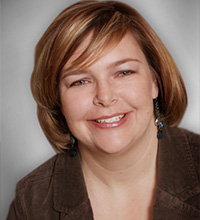Successor Team Dynamics in Family Firms
(Authors: John James Cater III, Roland E. Kidwell, and Kerri M. Camp)
Research Applied précis prepared by Barbara Dartt, The Family Business Consulting Group, Inc.
As family businesses grow from the founding to second and subsequent generations, it is highly likely that family members will also find themselves being team members. Some family businesses have teams of owners. Others have teams of managers. Little work has been done in relating family business success to the function of family teams. This study explores the important question: “Why do some successor leadership teams work together successfully and others do not?”
The study utilized data from 48 individual interviews with members of 19 family businesses undergoing succession. The family businesses studied were all from the United States. Family members interviewed ranged from senior to successor generation, from first to fourth generation in the business and from managers to owner-managers. Businesses varied from less than $1 million to over $500 million in revenue and from 12 to 119 years in business. All businesses were characterized by multiple successors in the leadership group. One interviewer conducted all the interviews, which were semi-structured and contained open-ended questions. Interviews averaged 45 minutes in length. Data was analyzed utilizing grounded theory analysis – a process that involves reviewing interview transcripts for repeated words, phrases and concepts that evolve to become the basis for a new theory.
The analysis led to a Successor Team Dynamics Model (see Figure 1) encompassing four stages of successor teams. For family business practitioners that regularly work with family-owned businesses on succession, many of the propositions flowing from this model will not be ground-breaking. Two example propositions include: “Positive successor team dynamics lead to the continuity of the original family firm;” and “Disagreement in successor team formation leads to the development of negative successor team performance.” We have often observed these situations in action. This model does support practitioners’ work with successor teams by providing a framework against which to assess a checklist of variables that influence the success or failure of these teams.
The study identified characteristics within each of the four stages of the Successor Team Dynamics Model as outlined below:
- Factors leading to entrance of successors into family business
- Family business history
- Family dynamics
- Personal experiences of successors
- Invitation or permission of the predecessor
- Successor team function (forming, norming, storming, performing)
- Leadership of the predecessor
- Division of tasks
- Team members develop skills
- Pecking order established
- Division of ownership
- Successor team performance
- Positive track
- Work together
- Group interaction, problem solving and decision making
- Successor team commitment
- Negative track
- Relationship conflict
- Dysfunctional behavior occurs or divergent interests arise
- Successor team dissolved
- Positive track
- Family business outcomes
- Original family business continuity
- New business formed by successor(s)
- Original family business ceases
The authors did compare Stage 2 of their Successor Team Dynamics Model to the work by Tuckman (1965) that described four stages of group and team development: forming, storming, norming and performing. This is a useful parallel when assessing where a successor leadership team is within its development.
There were two key takeaways for me, as a practitioner, from this study:
- When entering a relationship with a client family that has a successor leadership team, it may be very helpful to assess within which stage of the Successor Team Dynamics Model the team exists. Ideally, we would all become involved with a family when its business is early in the first stage. In fact, the best practice of creating a family employment policy could positively influence this first stage. Often, that is not when we are asked for help, however. Being clear about which stage the team is in could help in quicker assessment around what kind of support the team will require.
- The study reinforced the importance of senior generation leadership during succession. In my experience, without a base level of senior generation leadership (at minimum, the willingness to “get out of the way,” even the most competent successor generation leadership team won’t be successful.
About the contributor
 Barbara Dartt is an FFI Fellow and a consultant for The Family Business Consulting Group, Inc.. She can be reached at dartt@thefbcg.com.
Barbara Dartt is an FFI Fellow and a consultant for The Family Business Consulting Group, Inc.. She can be reached at dartt@thefbcg.com.




